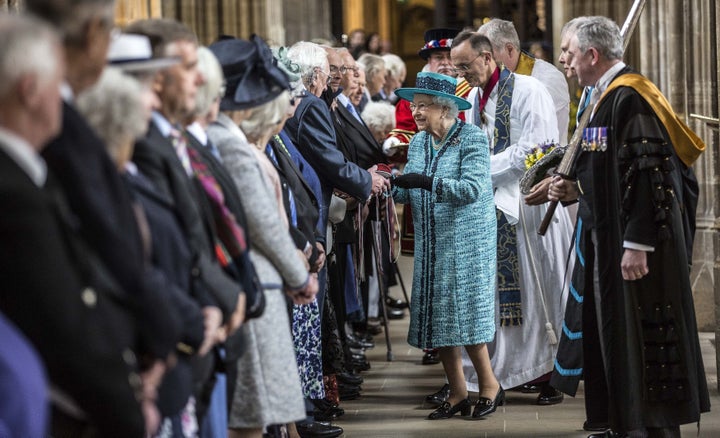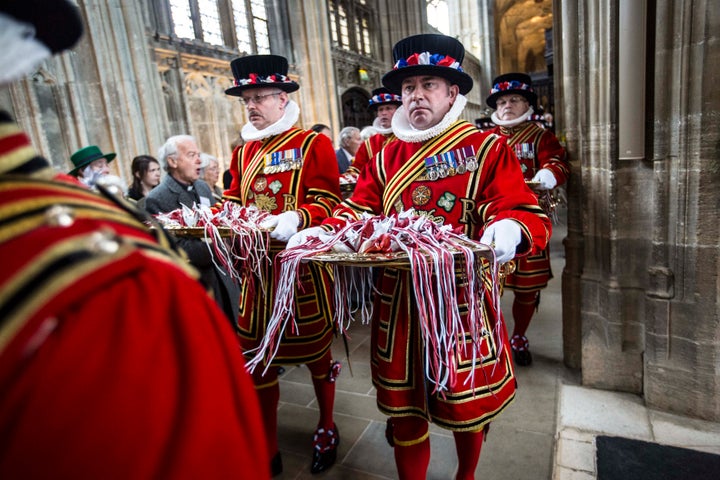Each year the Queen visits a different cathedral to hand out Maundy Money, with the royal honour this year going to Leicester.
Accompanied by Prince Philip, the Queen will give the money to 91 men and 91 women during a service for Maundy Thursday, the day before Good Friday.
The number of recipients reflects the monarch’s age, as the Queen will be 91 this year.
ALSO: Try our cracking Easter quiz - it will scramble your brain

What is Maundy money?
This is money ceremonially given to pensioners by the Queen.
A red purse is given containing money in lieu of food and clothing, while a white purse is given containing the ceremonial Maundy coins, which consist of the same number of pence as the years of the sovereign’s age.
The Maundy coin are legal tender but rarely spent because of their symbolic value.
How can I get Maundy money?
Unfortunately you have to be specially selected to receive Maundy money.
While those given the money in the past were poor, recipients are now chosen for having served their community.
Some people have (rather depressingly) sold their Maundy money on ebay and other online sites.

ALSO: Check Easter opening times for the bank holiday weekend
What is Maundy Thursday?
This commemorates the Last Supper Jesus had with his disciples. This coincided with the Jewish festival of Passover.
Churches mark this day in various ways, including communal meals, foot washing ceremonies and bell ringing.
What is the origin of the Maundy money service?
According to the Royal Mint, it was the custom as early as the 13th century for members of the royal family to take part in Maundy ceremonies.
They may have given out gifts and money, and taken part in foot-washing ceremonies to commemorate Jesus display of humility when he washed the feet of his disciples.
The Royal Mint’s website explains: “Henry IV began the practice of relating the number of recipients of gifts to the sovereign’s age, and as it became the custom of the sovereign to perform the ceremony, the event became known as the Royal Maundy.

“In the eighteenth century the act of washing the feet of the poor was discontinued and in the nineteenth century money allowances were substituted for the various gifts of food and clothing.
“Maundy money as such started in the reign of Charles II with an undated issue of hammered coins in 1662. The coins were a four penny, three penny, two penny and one penny piece but it was not until 1670 that a dated set of all four coins appeared. Prior to this, ordinary coinage was used for Maundy gifts, silver pennies alone being used by the Tudors and Stuarts for the ceremony.”
